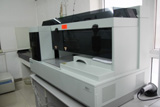Cramps after Dialysis: How to Treat It
2017-01-16 15:12Some dialysis patients complain that they are suffering from cramps after dialysis, and it can more or less influence the quality of their life.
What are the reasons of cramps after dialysis?
Muscle cramps of the hands, feet or legs is fairly common on dialysis. Though the cause of muscle cramps is unknown, three conditions that seem to increase cramping are: hypotension; the patient being below dry weight; use of low sodium dialysis solution.
Muscle cramps are more commonly associated with low blood pressure. It also can occur when you are below your dry weight. The severe muscle cramps experienced near the end of the dialysis treatment and persisting for a time after dialysis often is due to dehydration.
How to treat cramps after dialysis?
When you are cramping and have low blood pressure, the dialysis staff may give normal saline, which can increase the fluid in your body and muscle cramps may be relieved. In addition, hypertonic saline or glucose may be given. Heat and massage for the cramping muscle can ease the pain. For chronic leg cramps, they may prescribe Quinine, Carnitine or another medication. To avoid cramping, be sure to stick to your fluid and sodium restrictions every day. Maintaining a balance between your dry weight and fluid gains is necessary.
To be frankly, all those measures we mentioned above just can relieve cramps temporary, if you want to solve this problems from its root, you’d better take some alternatives of dialysis. Here i recommend Micro-Chinese Medicine Osmotherapy to you, it is an effective treatment of kidney failure. With the help of this treatment, the dialysis patient can reduce the dialysis times gradually, even, get a chance to get rid of dialysis.
If you want to know more details about this treatment or want to live a quality life without dialysis, you can send email to us, we will try our best to help you.
Our email: kidneyservice@hotmail.com
Any kidney problems? Please consult our online doctor. The satisfaction of patient is as high as 93%.
Tag: Dialysis Cramps after Dialysis
Pre: What are the Causes of Black and Blue Bruise in Arm after Hemodialysis
Next: Is there Any Relationship between Dialysis and Hair Loss
Leave a Message
Any questions?Fill the form below and we will surely attend to you within 24 hours.Free medical answers from experts!
About Hospital
Patient Story
- The Key Point In The Course Of Treatment
- Drinking More And Urinate Frequently Means Kidney Problems
- How To Deal With Occult Blood With Correct Methods.
















